
Dongshan Temple in Xuanwei City, Qujing
Dongshan Temple (东山寺) is located on the slope of Dongshan Mountain (东山) about 5 kilometers east of Xuanwei City (宣威市), Qujing (曲靖). This temple complex is a harmonious blend of Buddhism and Taoism. The main hall is the Ancestor Hall (祖师殿), with a central axis that includes the Middle Hall (中殿), Front Hall (前殿), and a screen wall (照壁). On either side of the Ancestor Hall, there are dining rooms, and on the left and right sides of the Middle Hall, there are morning bell (晨钟) and evening drum (暮鼓) towers.
In front of the temple is the Putuo Rock Waterfall (普陀岩瀑布), known as “Pouring Money” (倒洒金钱). The spring water is carried into the air by swirling mountain winds, resembling countless coins scattered in the sky, creating a stunning scene where the “Pouring Money” falls to form a rainbow. The area has now developed into Dongshan Park (东山公园).
Introduction
Dongshan Temple, also known as Songhe Temple (松鹤寺), was established in the early Ming Dynasty (明朝). After enduring the test of time, it now welcomes visitors with a brand-new appearance. There is an archway at the entrance with the inscription “Songhe Temple” (松鹤寺) written by Mr. Long Yun (龙云) in 1943. The flanking wooden carvings feature another of Long Yun’s famous lines: “The spring flows and clouds rise, the pines remain; the city changes, yet the cranes return.” The grand archway is adorned with cloud patterns and shines brightly in the sunlight.
Beyond the archway, there are several ancient cypress trees providing shade, mostly planted during the Qianlong period (乾隆) of the Qing Dynasty (清朝). Stone tables and benches are set under these trees for visitors to rest and enjoy the peaceful surroundings.
Architectural Features
Dongshan Temple is an ancient architectural complex that integrates both Buddhism and Taoism. It consists of major buildings such as the Mountain Gate (山门), Temple Gate (寺门), Passage Hall (过道殿), Heavenly King Hall (天王殿), Mahaviro Hall (大雄宝殿), Guanyin Hall (观音殿), Ancestor Hall, Bell Tower (钟楼), Drum Tower (鼓楼), Sea Viewing Pavilion (望海楼), Chuanfeng Pavilion (淳风亭), Nine-Dragon Pool (九龙池), and the Living Buddha Cave (活佛洞), covering an area of approximately 60,000 square meters.
According to local legend, General Fu Youde (傅友德), who campaigned in the south during the Ming Dynasty, witnessed the manifestation of the Zhenwu Emperor (真武大帝) here and subsequently ordered the construction of a Taoist temple on Dongshan to worship the Zhenwu ancestor. After several renovations and expansions, it developed into a grand architectural complex. The Ancestor Hall serves as the main building, with the Middle Hall and Front Hall aligned along the central axis. Dining rooms are located on either side of the Ancestor Hall, and bell and drum towers are positioned at the front.
In front of the temple, the waterfall cascades over rocky cliffs, creating a spectacular sight that resembles coins falling from the sky, known as “Pouring Money Springs” (倒洒金泉). The cliffs surrounding the temple are steep and formidable, with two pavilions located above: the Living Buddha Cave and the Great Master Pavilion (大士阁).
Geography
Dongshan Temple is located 10 kilometers east of Xuanwei City, surrounded by lush forests and picturesque scenery. Climbing to the mountainside provides breathtaking views of verdant grass, blooming flowers, and babbling brooks.
Cultural History
The Xuanwei County Annals record that the temple was built to honor the manifestation of the Heavenly Emperor of the Yuan Dynasty (元朝), which was first seen here by the local officials.
Through the shade of ancient cypress trees, one can see white cranes dancing gracefully, as the walls of the temple are adorned with pine and crane motifs. Passing through the ancient cypress grove leads to the courtyard between the Front Hall and the screen wall, filled with rare trees like Dragon Cypress (龙柏) and various flowering plants. Ascending further, one reaches the Lingguan Palace (灵宫殿) and Ancestor Hall, with corridors on both sides that rustle in the breeze, creating a serene atmosphere.
The climb continues to the Bell Tower, where a small pavilion known as the “Zhiqu Pavilion” (知趣亭) stands out, featuring red pillars and yellow glazed tiles, making it vibrant under the blue sky. In front of the pavilion is the “Lotus Dream Pool” (莲梦池), filled with crystal-clear spring water and mist. Following the stream upstream leads to the Ancestor Hall, where spring water flows beneath the hall, encircling a small pond with a bridge crossing over it.
Dongshan Temple is not just a temple; it is also a garden, with its layout balancing openness and density, creating a harmonious design that enchants visitors with a sense of being in a hidden paradise. A couplet praising the temple reads: “The water is beautiful, the mountains clear, the serenity rivals that of Western Regions; the cliffs are steep, the sky is high, this surely is Donglin.”
When visiting Dongshan Temple, one cannot miss the “Pouring Money Springs.”
The “Pouring Money Springs” is also referred to as “Pouring Gold Coins” (倒撒金钱), located at Putuo Rock. Legend has it that during a long drought in Xuanwei, a monk built a temple here and, upon praying for rain, scattered gold coins. In an instant, the mountain winds picked up, and heavy rain fell for five days and nights. Since then, the springs have flowed abundantly, and the waterfall cascades, with swirling winds carrying the water high into the air, creating a mist resembling rainbows under the scorching sun.
Putuo Rock rises over a hundred meters, with a peach orchard at the top. The spring water flows through the orchard and cascades down as a waterfall, creating a white mist below. Twenty meters west of the waterfall is a prominent cliff with a natural cave shaped like a dish, known as “Dish-Shaped Sky” (碟大天). Winds from the southern plains are often blocked by the cliff, creating a swirling breeze from the cave. Some curious visitors throw their hats over the cliff, only to see them slowly rise back up and gently land nearby, adding an element of fun.
At times, strong mountain winds tear the waterfall into fragments, sending them soaring into the sky and scattering into mist, creating beautiful rainbows in the sunlight.
How to Get There
Dongshan Temple is about a 30-minute drive from the center of Xuanwei City. You can reach it by private car, taxi, or local bus.
Travel Tips
While visiting, take time to explore the beautiful surroundings and enjoy the tranquility of the temple grounds. Don’t forget to bring your camera to capture the stunning views, especially the “Pouring Money Springs” which makes for a spectacular sight. Consider visiting during weekdays to avoid crowds for a more peaceful experience!
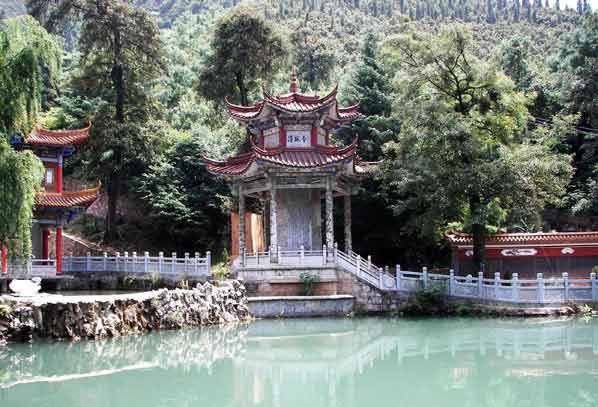
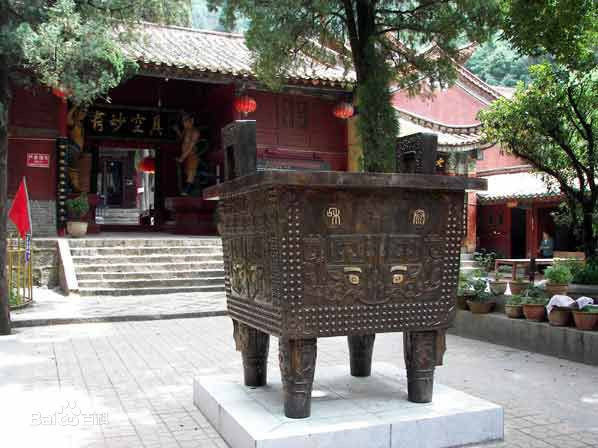
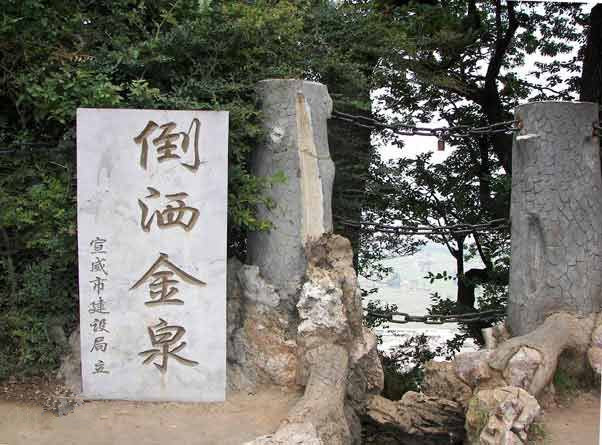
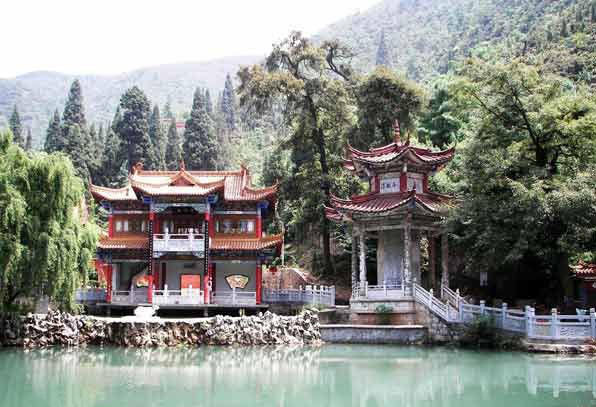
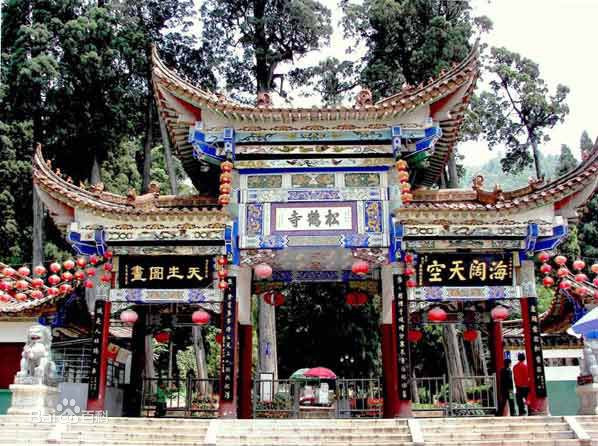
Location:

 7 Days GolfingTour
7 Days GolfingTour
 8 Days Group Tour
8 Days Group Tour
 8 Days Yunnan Tour
8 Days Yunnan Tour
 7 Days Shangri La Hiking
7 Days Shangri La Hiking
 11 Days Yunnan Tour
11 Days Yunnan Tour
 6 Days Yuanyang Terraces
6 Days Yuanyang Terraces
 11 Days Yunnan Tour
11 Days Yunnan Tour
 8 Days South Yunnan
8 Days South Yunnan
 7 Days Tea Tour
7 Days Tea Tour
 8 Days Muslim Tour
8 Days Muslim Tour
 12 Days Self-Driving
12 Days Self-Driving
 4 Days Haba Climbing
4 Days Haba Climbing
 Tiger Leaping Gorge
Tiger Leaping Gorge
 Stone Forest
Stone Forest
 Yunnan-Tibet
Yunnan-Tibet
 Hani Rice Terraces
Hani Rice Terraces
 Kunming
Kunming
 Lijiang
Lijiang
 Shangri-la
Shangri-la
 Dali
Dali
 XishuangBanna
XishuangBanna
 Honghe
Honghe
 Kunming
Kunming
 Lijiang
Lijiang
 Shangri-la
Shangri-la
 Yuanyang Rice Terraces
Yuanyang Rice Terraces
 Nujiang
Nujiang
 XishuangBanna
XishuangBanna
 Spring City Golf
Spring City Golf
 Snow Mountain Golf
Snow Mountain Golf
 Stone Mountain Golf
Stone Mountain Golf


















